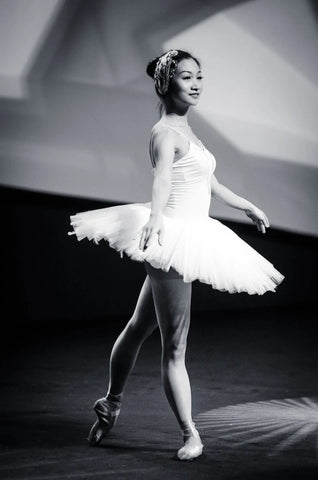Free shipping on all Australian orders over $75

Let’s talk about ballet shoes - the fundamental shoes for ballet dancers. When selecting them, there is a generous variety of styles, colours and fabrics. However, they have a historical significance with different cultural influences. If you’re passionate about ballet dance, it is valuable to have a sense of appreciation and respect for its history and culture. Understanding the influences could even inspire further innovation and performance! In today’s blog, we will study the evolution of ballet flats, from their roots to their effect on contemporary culture. As a dancer, purchasing dancewear of high quality is essential. At Mino Dance, we have a stellar lineup of activewear to match with our ballet shoes.
Today, the typical ballet flats are thin and lightweight shoes constructed from soft leather and canvas. The signature ballet shoes are known for their thin soles that assist in providing the utmost flexibility. They are made with elastic to secure the fit close to the foot and ensure safety.
The origins of ballet shoes can be traced back to the 1600s. In 1680, the initial ballet shoe was created as a heel at the Royal Academy of Dance in France. The society of this period valued the aesthetics of fashion over functionality, and so the original pairs were heels that were uncomfortable and challenging for performers to dance in. Due to the discomfort, ballet flats were originally designed as a practical footwear solution. This was a more comfortable shoe for ballet dancers, by offering flexibility and an easy way to move. This allowed ballet dancers to perform complex dance steps with an elegance and accuracy that couldn’t have been possible before. High heels became increasingly unpopular, in addition, with Marie Antoinette’s walk to the guillotine (a place for execution) while wearing a pair of high-heeled shoes. Consequently, Antoinette’s heel-clad execution caused many women to not wear high heels.
Fast forward, the shoes gained more popularity further than the dance performance. Ballet flats evolved as a fashionable option for non-dancers who enjoyed the combination of comfortable and graceful footwear. One of the first to wear the flat version was the dancer Marie Camargo. American demand for these shoes increased in the 1880s when Salvatore Capezio moved to America to design better ballet shoes. In the 1940s, a famed shoe designer named Rose Repetto designed her own ballet shoes. She constructed pointe shoes which became famous with ballet companies globally. Many individuals enjoyed the simplicity of the original design. As a fashion choice, it exceeds in versatility, because it is appropriate for both casual and formal circumstances.
Ballet flats have surpassed their functional origins and evolved as a cultural symbol. The ballet shoe is a representation of femininity, elegance, and timelessness - a significant symbol of independence, challenging the traditions of fashion and style. The relationship between ballet and dance is a component of artistry and culture in these shoes. By prioritising comfort, this is an alternative to high heels, enabling women to move freely without the cost of their fashionable style. They’ve even had an impact on popular culture, strutting their way into popular movies, such as “Funny Face” and “Black Swan,” further confirming their timeless elegance. Even influential figures use the shoes to be more fashionable with their modern day chic.
Ballet flats have profound historical and cultural significance. The timelessness of these dance shoes is incredible. At Mino Dance, we recognise the significance of dancewear and inform you about dancewear. In fact, we deliver a range of dance shoes. If you have any questions or would like more advice on finding the right product or fit, feel free to reach out. We are at your disposal for any need you have.